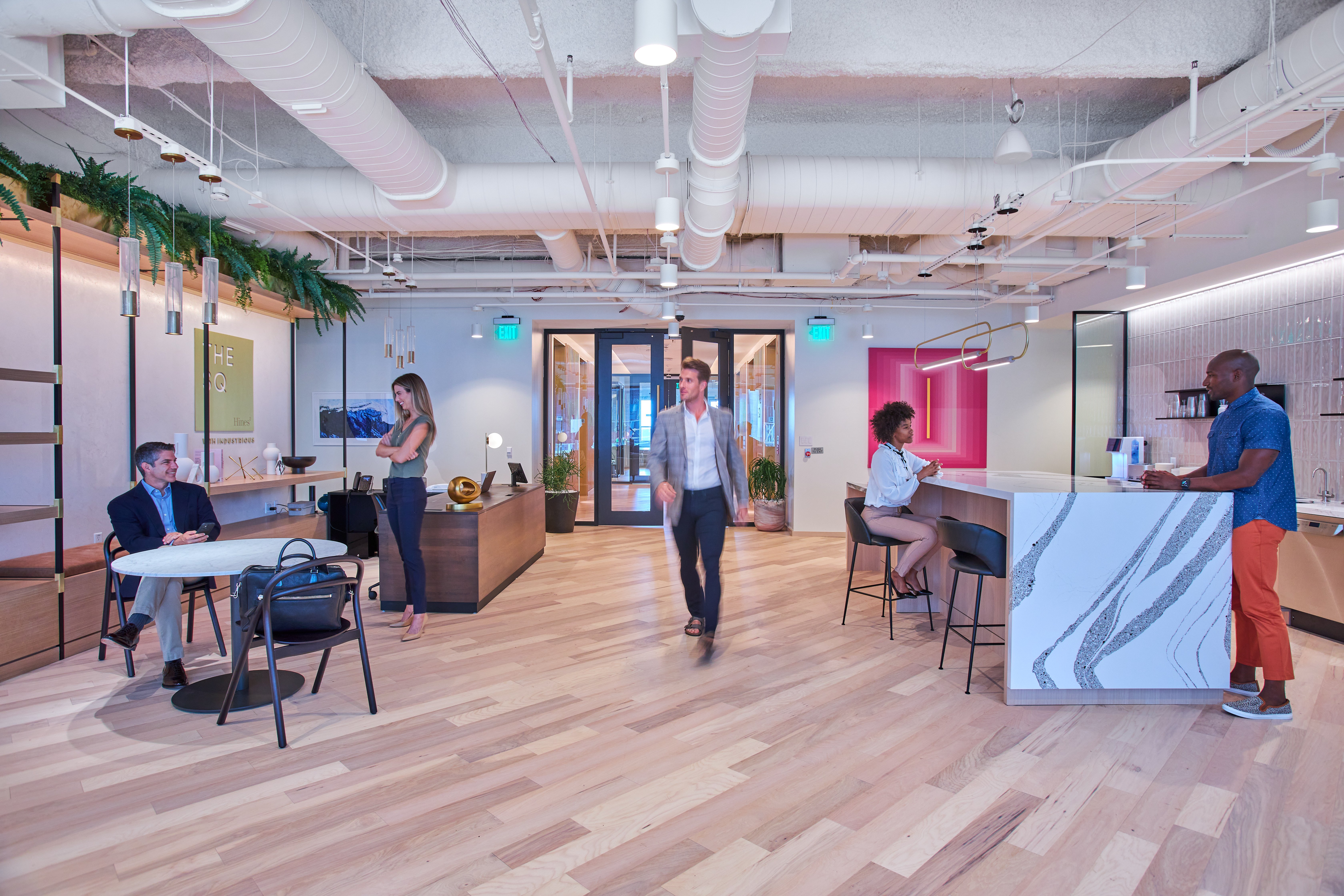What Office Space Layout Is Best for Your Team?
The way the world works is changing. As the pandemic wanes, more and more people are returning to physical offices at least part time. Hybrid work models, which offer employees more control over whether they work remotely or from the office, are growing in popularity.
Regardless of how often your team comes into the office, one thing remains true: workspace design matters.
The ideal office space provides areas for various types of work activities, including focus time, collaboration, learning, and social interaction. Without the ability to cater to each one, your team members’ creativity, performance quality, and overall well-being may decline, negatively impacting your organization’s employee experience.
Whether you’re curating your own space from scratch or looking to move into a ready-to-use space, here are some things to consider when it comes to different types of office space layouts:
What’s the main goal of your workspace?
First, reflect on why you’re looking for a new workspace. Are you hoping to avoid the pitfalls of your current office? Increase profitability? Grow your team? Create a more hybrid work-friendly space? Reduce office costs? Consider not only your short-term goals, but also how your needs may change over the next few years.
You’ll also need to consider the day-to-day purpose and functionality of the space itself. This can vary greatly depending on your industry and team. For example, a highly collaborative team that works together on most projects will have different needs than a team of people who have more individual work.
Finding balance
No matter your goals, it’s important to find the right balance for your team between social, focus, collaborative, and learning areas.
Social areas
Giving your team a lounge or common area to congregate and interact during breaks is important for morale. The opportunity to socialize with other team members in a comfortable, relaxing environment encourages positive working relationships and can help prevent burnout.
Focus areas
Studies show that employees dislike being forced to work in open-layout spaces, which can quickly become noisy, crowded, and full of distractions. Team members who need to concentrate for long periods of time benefit from access to private, distraction-free spaces. Soundproof rooms and phone booths can add an extra layer of privacy and concentration.
Collaboration areas
As more teams become hybrid or globally distributed, being able to work together both in person and virtually is important.
For in-person collaborations, employees need access to small rooms/meeting pods, as well as larger conference rooms with whiteboards and screen sharing. Furniture that can be easily moved and rearranged is a plus for flexibility.
Virtual collaboration needs to be just as seamless as in-person collaboration, so a fast, reliable internet connection is a must. Conference and meeting rooms should be equipped with video conferencing and screen sharing technology.
Learning areas
To share ideas, onboard new team members, and continue skill development for current team members, your office space should provide areas for learning. Provide access to multipurpose rooms, conference-style rooms with screens/projectors, and study areas.
Office workspace layout options
Every office space has its benefits and drawbacks depending on the type of environment you’re looking for. There are many different types of office space layouts, but here are four common ones, and the pros and cons of each:
Private offices – Everyone on your team has their own private office within the workspace.
Pros:
- Everyone has their own designated space and can execute their own private office layout ideas
- Fosters autonomy
- Allows for concentration and privacy
Cons:
- Less free-flowing conversation
- Can be expensive depending on the size of your team
Open office – Everyone works together in one open space, often at communal tables.
Pros:
- Conversation can flow freely; plenty of opportunities to socialize
- Everyone is in view, so it’s easy to supervise everyone or find a particular team member
Cons:
- Distracting environment
- Potential for high noise level
- Lack of privacy
- Might be uncomfortable for introverted team members
Shared office/coworking space – Your team shares a communal workspace with other companies and individuals.
Pros:
- Conversation can flow freely; plenty of opportunities to socialize
- Opportunity to network with other companies
Cons:
- May have to compete with others for space, desks, meeting rooms, etc.
- Lack of privacy
- The environment may be less professional
Flexible office space – Your team has their own designated, private space, even if some areas are shared with other companies.
Pros:
- Combines the best aspects of traditional and coworking spaces
- Provides individuals different ways to work depending on their needs at that moment
- Wide variety of seating options and workspaces
- Offers more flexibility and choice for team members
- Encourages a balance of focus and social interaction
Cons:
- Distractions may still be an issue in open areas
Conclusion
Office layouts matter more than you may think, so be sure to pick one that works for your team. Keep in mind that it doesn’t have to be an all-or-nothing decision — you can take factors from different design styles and bring them together for a mix that fits your needs.
The Square offers access to everything from private offices to flexible enterprise suites. If you’re not sure what layout style fits your team, let’s chat!
